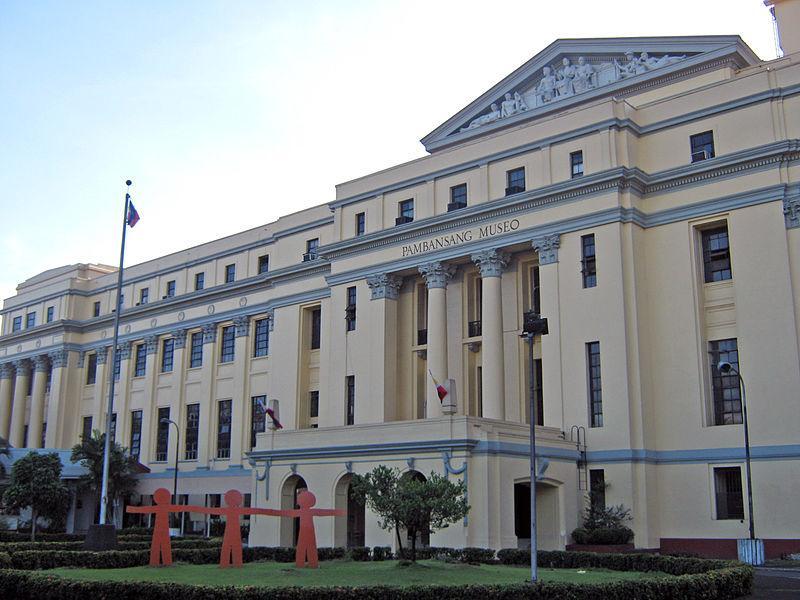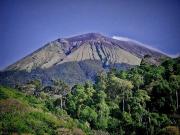
The Philippines is full of museums caring for the collection of artifacts and other objects of scientific, artistic, cultural, or historical importance which makes them available for public viewing through exhibits. The largest and most visited museums in the Philippines are located in major cities of Metro Manila, although there are also interesting museums in some provinces. Here is the list of the top ten most visited museums in the Philippines.
National Museum of the Philippines
The National Museum in Manila (officially the Museum of the Filipino People) in Rizal Park is originally designed as a public library by Ralph Harrington Doane, the American consulting architect of the Bureau of Public Works in 1918, and his assistant Antonio Toledo. It was inaugurated on 16 July 1926, and by then it had cost four million pesos. In 2003, renovation started to transform it into the National Art Gallery of the National Museum.
Its existence is anchored on the basic philosophy that the Filipino nation is kept unified by a deep sense of pride in its own identity, cultural heritage and nature patrimony. The national identity of the Filipino must be developed and enhanced, while imbibing the spirit of nationalism and strong commitment in the protection and dissemination of its legacy.

Located at the heart of the Ayala business district in Makati, Ayala Museum is one of the most important and most visited private museums in the Philippines. It exhibits a number of cultural and historical items that cannot be found elsewhere in the country. It opened in 1974 and moved to its present location at the corner of Dela Rosa Street on 28 September 2004 during Ayala Corporation’s 170th anniversary.
Checking out this world-class museum of art and history will give you a different style of education. The museum’s main attraction is a collection of dioramas showing 60 of the country’s significant historical events dating back from prehistoric times to the recognition of Philippine independence in 1946. A recent addition is a multimedia presentation of the 1986 People’s Power Revolution, in which the business district of Ayala, Makati played an important role. There are collections of miniature boats that show the evolution of sea vessels that were used in the Philippines. It holds a small collection of ethnographic artifacts of Filipino minority communities both from the northern and southern part of the country including tools, weapons, ritual objects, clothing, body ornaments, and musical instruments. It also possesses rare paintings from our Filipino masters and golden artifacts which are excavated from different parts of the country.

Science comes alive! Mind Museum is the first world-class science museum in the Philippines. It is located at the JY Campos Park, 3rd Avenue Bonifacio Global City, Taguig. It is a home for every young Filipino scientist, a showcase of different technological breakthroughs, and a haven of learning and information.
Mind Museum has five interesting galleries namely, The Story of the Universe: Its Beginning and Majesty; The Story of the Earth: Its Story across the Breadth of Time; The Story of Life: The Exuberant Varieties of Life; The Story of the Atom; The Strange World of the Very Small; and The Story of Technology: The Showcase of Human Ingenuity. These galleries present science through five main stories, taking off from our culture’s resonance with storytelling.
Cultural Center of the Philippines
The CCP provides performance and exhibition venues for various local and international productions at its eponymous 62-hectare complex located in the Cities of Pasay and Manila. The Tanghalang Pambansa is the flagship venue and principal offices of the Center. It has three exhibit halls and another three hallways that can be used for displaying artwork. The largest exhibition space is the Bulwagang Juan Luna, which serves as the Main Gallery. Located at the third floor, it has a floor area of 440 square meters. Two smaller galleries are named after Filipino painters Frenando Amorsolo and Carlos Francisco. The latter is usually used for large scale installations and is located at the lobby of the Little Theater.

Created in 1966, The Cultural Center of the Philippines has sought to truly embody its logo of katotohanan (truth), kagandahan (beauty), and kabutihan (goodness). The best artists from all over the country and around the world have graced the CCP theaters and galleries, enthralling Filipinos for over thirty years.
UST Museum of Arts and Sciences
Started as Gabinete de Fisica, an observation of mineral, botany, and biology collections in the 17th century, it is used as classroom materials for the courses in science especially in Medicine and Pharmacy.
The University of Santo Tomas Museum, known to be the oldest existing museum in the Philippines, is proud of its vast collection. Preserved for over three hundred years in the Main Building, the collections grew with the inclusion of significant cultural objects and artifacts.
UST Museum is honored to present cultural artifacts considered indigenous to the Philippines. These are categorized into tribal musical instruments; three dimensional artifacts; household wares and daily life; weaponry; brass and metal crafts; and wares and burial jars.
Unlike traditional museums where facts and artifacts are displayed behind glass shelves only to be admired but not touched, Museo Pambata features hands-on exhibits that encourage children to explore and discover various concepts while they play.

The Children's Advocacy Program or CAP is an alternative educational program that aims to help children understand and appreciate their roles in their families, schools, communities, and in society. It uses the child-to-child approach wherein children advocates serve as mentors who help inspire other disadvantaged Filipino children through outreach activities in schools and communities.
Being one of the most frequented historical and tourist sites in Laguna, Jose Rizal Shrine in Calamba reported an average of 270,000 visitors annually. The museum represents a house where Jose Rizal was shaped and molded and who would later become the finest expression of his race. It is a replica of the original ancestral house of Rizal’s family when the old one was destroyed during World War II. It was President Quirino who ordered the reconstruction of the national hero's home through the supervision of National Artist/architect Juan Nakpil and was inaugurated in 1950.

One of the known features of the Spanish-Colonial house is a deep well that has become a “wishing well” for tourists and visitors. Other items featured in the museum are Rizal's books and photographs, native utensils and artifacts used during the Spanish times, the black coat worn by Rizal during his execution, and many other interesting finds.

Even if the museum looks old, Bohol Museum takes the third spot in the top 5 tourist spots in Tagbilaran, Philippines. Located at the corners of Hontanosas and F. Rocha streets, many tourists visit this place for it features interesting artifacts about the province of Bohol. It boasts unique art objects, zoological displays, botanical collections, and archeological artifacts. The museum also presents a historical value because former Philippine President Carlos P. Garcia used to reside in this historic site. His memorabilia together with his family’s bric-brac are displayed here.
Clark Museum
Clark Museum is a very famous tourist destination located at the Clark Special Economic Zone. It is a home to numerous artifacts that are essential to the history, heritage, and culture of residents in the place. It also displays Pampanga’s tragic experience with the eruption of Mount Pinatubo and its rise as one of the country’s main economic zones. Many people visit the museum for it houses relics that are important to the lives of early people in Angeles City.
History and culture lovers would appreciate the rich history and transformation of Clark, from the time it was used as a US Military Base to its present development.
Palawan Museum is recognized nationwide as a prime tourist destination in Palawan. It is a useful site that encourages tourists to learn Palawan’s local and native culture.
In 1991, Palawan Museum was created to showcase information about artifacts and fossils found at the Tabon Caves, where the skull and bones of the first Philippine man was found. This museum is the center and repository of relics and artifacts of Palawan as a genuine source of the rich natural and historical legacy of Palawan and as a source of a growing collection and reference on Palawan’s cultural heritage.
Different sections in the museum like the anthropology, archaeology, biology, ethnology and historical sections are able to stir interest among the visitors and teach them about the great value of Palawan’s heritage. A library is also found at the Palawan Museum, which is composed of donations like hard-to-find books on archeology, history, culture, ethnology, and anthropology about Palawan and the whole world.
- http://www.museopambata.org/
- http://www.ayalamuseum.org/
- http://www.themindmuseum.org/
- http://www.culturalcenter.gov.ph/
- http://www.nationalmuseum.gov.ph
- http://www.lagunatravelguide.com/index.php?page=rizal-shrine
- http://ustmuseum.ust.edu.ph/
- http://thepalawanmuseum.wordpress.com/
- http://www.clarksubicmarketing.com/clark_travel_guide.htm
- http://www.philippinesboard.com/tourist-spots-in-tagbilaran.php










